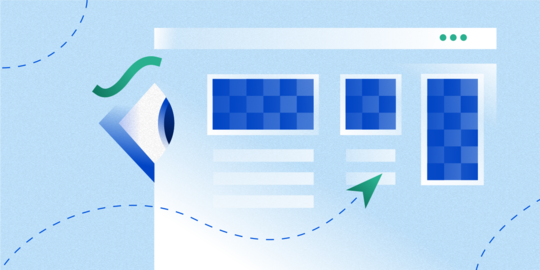How to Boost Ad Viewability by Targeting 'Ad Aware' Users
Over the past few years marketers have attached increasing value to ad viewability as a key metric in measuring the success of digital campaigns. After all, making sure that your online ads are seen by your target audience is clearly important.
At a very basic level, ad viewability for mobile or web ads was first defined back in 2010 by the Interactive Advertising Bureau (IAB) and the Media Rating Council (MRC), as a way of measuring a digital ad's performance and cost-effectiveness.
Generally speaking, display web and mobile ads are counted as viewable impressions when at least half of the ad is in view for at least one second, whereas video ads are counted as viewable when at least half of them are in view and playing for a minimum of two consecutive seconds.
Ad viewability steadily increasing
The accepted way of thinking across the advertising community is that boosting ad viewability means your digital ads have a much clearer chance of being seen. Makes sense, right? After all, it seems pretty obvious if a user cannot see your ad, then it is going to have zero impact.
Since 2014, when Google shocked the digital advertising community with the news that over half (56.1%) of rendered ads actually never reach online users, this focus on maximizing ad viewability has steadily increased in the numbers of online ads being seen by users. So much so, that late last year the UK desktop display ad viewability rate broke the 70% barrier for the very first time.
Boosting ad viewability percentage
In the past, advertisers looking to maximize ad viewability mainly just pumped millions of dollars into ads that are above-the-fold (a print term, which refers to the point on a website where the user needs to start scrolling) and into A/B testing, to gauge how an online ad's position, size and layout impacts its overall viewability.
Today, however, the focus has largely turned to solely increasing viewability percentage, which is why several third-party verification tools such as DoubleVerify, IAS and MOAT have increased in popularity. These platforms supposedly work by verifying ad viewability metrics for ads, offering advertisers the transparency they need to trust their ad-delivery data.
This is why, over the last few years, more and more ad buyers have been spending an increasing amount of money on boosting their viewability percentage via these third-party verification tools.
Viewability is meaningless to the banner blind
Yet, still too few in the digital advertising community are asking the following fundamental question: What is the point of striving to increase viewability percentage if the users are ad blind? If a tree falls in a forest...
With millions of dollars being wasted every year in the digital advertising space, on ad-tech taxes, ad fraud and more, it is baffling that marketers are still spending millions in the hope of boosting ad viewability, only for the resulting ads to reach 'banner blind' users. Surely, it makes more sense for advertisers to try and connect viewable ads with users who are not 'banner blind', but instead are 'ad aware'?
'Banner blindness' is a common affliction amongst standard online users (by 'standard' we mean those users who are not using ad-blocking or ad-filtering software). Their eyes have been trained, following years of ad bombardment, to ignore the online page elements they perceive to be ads. So, what is an advertiser to do? Well, this is why we strongly advocate the Acceptable Ads Standard along with well over 200 million others across the globe.
Connect viewable ad inventory with 'ad aware' users
Acceptable Ads audiences don't suffer nearly as much from 'banner blindness'. They have chosen to stop the bombardment and exercise some control over the ads delivered to them.
For this reason, we implore those advertisers spending vast amounts of money on boosting ad viewability to also consider better ways of targeting their viewable ad inventory amongst this 'ad aware' audience.
With global digital ad spending predicted to hit $332.84 billion in 2020 (capturing over half [52%] of all of ad spending for the first time ever), choosing to invest in bigger, more intrusive and more 'viewable' ads that only ever end up being delivered to the 'banner blind' doesn't seem a smart move. Instead, it's important marketers recognize the real value on offer from the ad-filtering user audience.
This guest post was written by Aditya Padhye, Director of Business Development, eyeo


